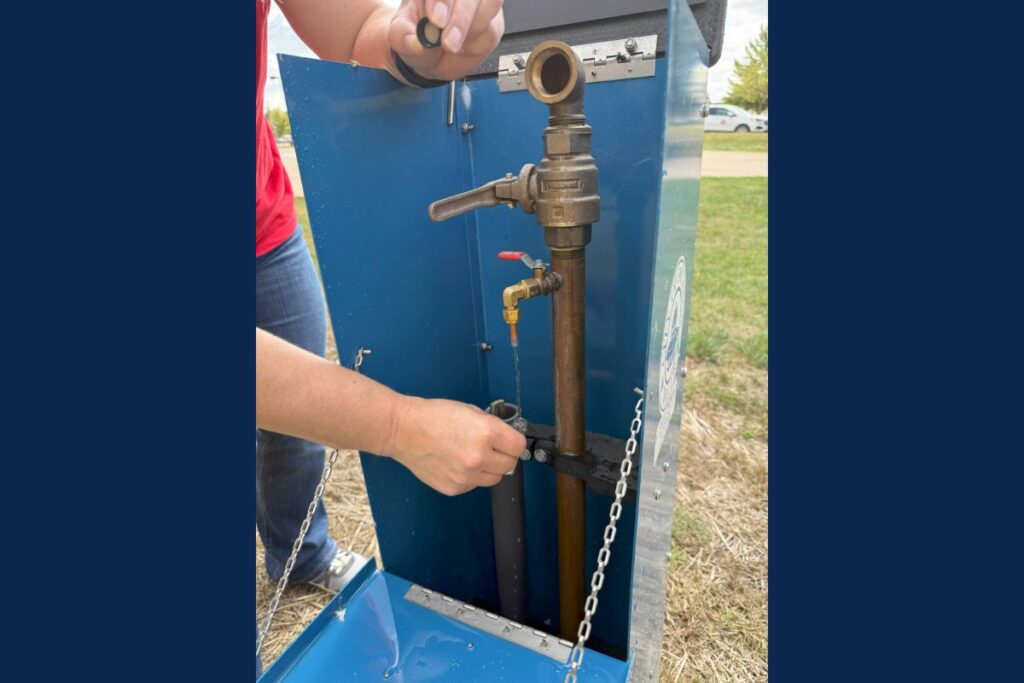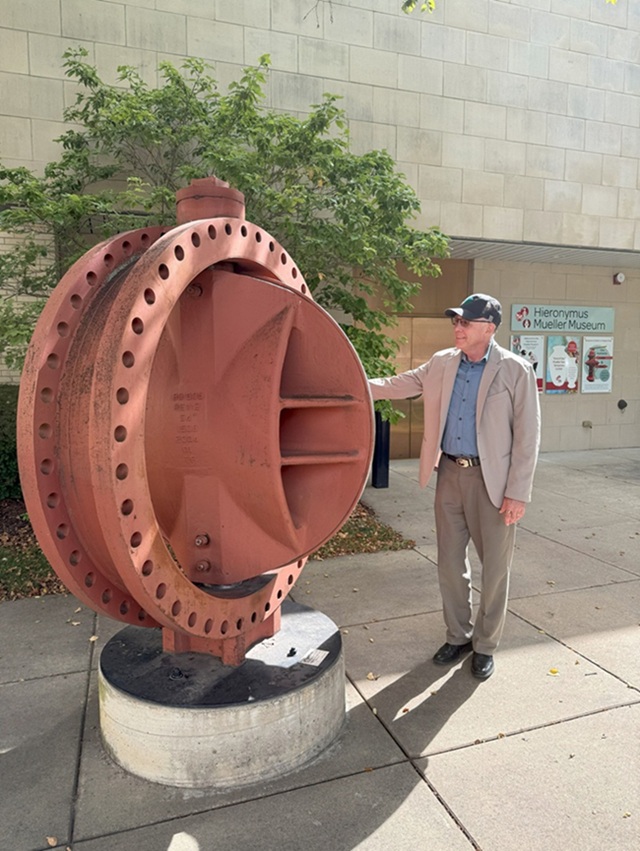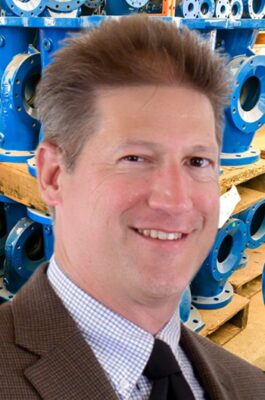A Sample Station Solution: Decatur Boosts Safety, Efficiency in Water Quality Testing
Date:
Publication:

The Public Works Department for the City of Decatur, Illinois, has found a solution to a persistent challenge facing water utilities nationwide: efficiently collecting representative samples from distribution systems while maintaining rigorous water quality standards.
Serving both the City of Decatur and the Village of Mt. Zion with a combined population of approximately 70,500 residents, the utility draws its water supply primarily from the city-owned Lake Decatur, a 3,000-acre, 9.6-billion-gallon reservoir formed by a dam constructed in 1922. The city's treatment plant provides an average of 19 million gallons per day to its residents and its robust agro-industrial sector. Two ground storage tanks store a total of 12.5 million gallons (MG) and three elevated tanks maintain pressure in two zones and store an additional 3.5 MG. The distribution system includes 536 miles of water main ranging from 4” to 36” diameter. The city's unaccounted water loss was only 14.2% in 2024.
The Sampling Challenge

Kathleen Davis, laboratory technician at the City of Decatur Water Production Division, overseas the monitoring of the treated water supply throughout the distribution network. The adequacy of chlorine disinfectant levels and the absence of microorganisms must be checked on a regular basis. However, the traditional sampling approach presented significant operational challenges. Davis had to coordinate building access with property owners, a time-consuming process that sometimes resulted in scheduling conflicts. Once inside the facility, she needed to flush the service lines for at least five minutes to ensure the sample was a good representation of the main distribution system. This lengthy flush time sometimes raised questions about sample validity if the results were unexpected, occasionally requiring duplicate testing to confirm results.
“Gas station restrooms were the most challenging,” Davis recalls, highlighting the sanitary concerns that accompany sampling from public facilities where cleanliness and access conditions remain outside the utility's control.
Strategic Solution: Hydro-Guard Sampling Stations
Since the founding of Mueller in 1857 in Decatur, Mueller Co. LLC and the city have worked together on many water management projects. The most recent was the installation of 19 Hydro-Guard® Blow-Off Sampling Stations (B.O.S.S.) at key nodes in the distribution network. The stations were strategically positioned at critical points, based on a sampling plan approved by the Illinois Environmental Protection Agency. An extra unit was purchased to serve as a backup replacement unit.
The permanent, easily accessible sampling points have eliminated the need to coordinate access to buildings, allowing Davis to collect samples at optimal times without scheduling constraints. The direct connection to watermain lines requires only brief flushing, saving around five minutes per sampling location.
“The sampling stations have improved the collection process by cutting down the time that I need to sample because I am tapped right off the main,” Davis explains. “I just have a short line to flush, and then I can take my sample.”
Beyond time savings, the Hydro-Guard sampling stations deliver a better sample quality. Davis notes improved confidence in results: “I know that I am getting accurate results because I am sampling directly from the main. I don't have to second guess that the line was flushed long enough to clear a service line.”
Using a permanent, easily accessible, Hydro-Guard sampling point assures that the city can collect samples that are more representative of the infrastructure they manage, from locations where sanitary conditions are under the control of the collection personnel. “Having dedicated sampling stations eliminates the variable of using unclean public facilities,” said Davis.
Maximizing Infrastructure Investment

During the installation of the sampling stations the city added 13 i2O® pressure loggers in strategic locations. This included the extremities of the system, high demand areas, and at pressure zone boundaries to help detect leaks and monitor pressure for the city's large industrial customers.
These i2O pressure loggers monitor both pressure and temperature, transmitting data to the Sentryx™ Water Intelligence platform. This real-time information enables operators to troubleshoot pressure issues, which is particularly important for large industrial customers who depend on consistent pressure and high-volume supply. The loggers also allow for temperature monitoring to provide early warning of freeze conditions that could cause pipe failures if not addressed proactively.
Water Production Manager Robert Weil sees additional opportunities: “I'd like to have early warning on pressure losses on critical lines to prevent a costly disruptive failure,” referring to two waterlines crossing under an interstate highway where failure would cause significant service disruption.
Results and Future Plans
Based on the positive impact of the first set of sampling stations, the city plans to fully implement its sampling plan with an additional 60 sampling stations over the next several years. They plan to integrate the temperature and pressure outputs into their SCADA system, enabling the plant operators to detect leaks quickly and alert the distribution operators. The city's approach uses a recent product development, which now allows for pressure loggers to be integrated into sample stations using cable transducers.
Decatur's experience demonstrates how strategic infrastructure investment can simultaneously address multiple operational challenges. The sampling station project delivered immediate benefits in efficiency, sample quality, and operational flexibility while also creating opportunities for the city to enhance pressure monitoring through the system.

Author: Harold Mosely, a business development leader for Mueller, has managed the Hydro-Guard® brand since 2004. Mosely's expertise in automated flushing, pressure and water quality monitoring, bacteriological sampling and advanced water quality monitoring and mitigation has helped utilities to deliver safe, reliable drinking water.